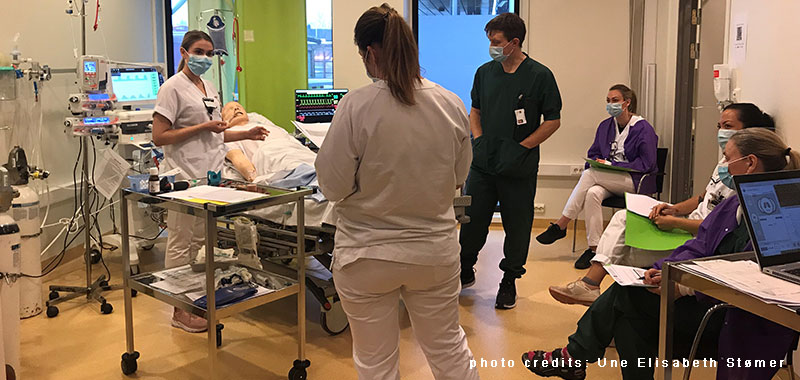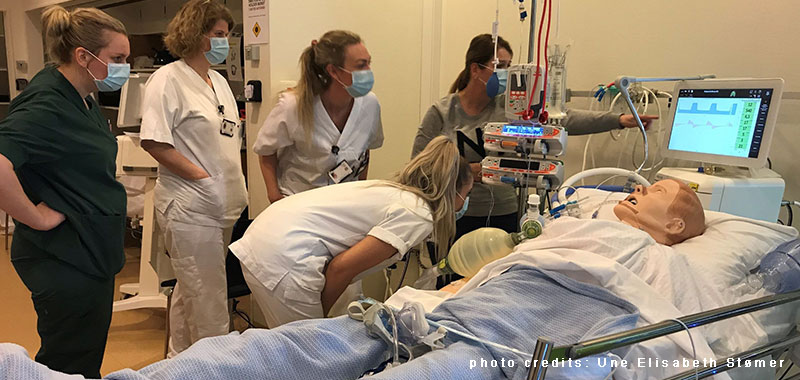
The SAFETY project aims to renew the existing training offer and overcome training gaps, making practitioners safer and ready to act in real emergencies. The SAFETY project also aims to collaborate across different sectors and countries to develop new standards and best practices in emergency medicine and simulation. The collaboration and sharing of knowledge are crucial to enhance healthcare and reduce inequalities between the European countries.
The idea of collaborating across sectors is appealing and appears in other projects as well.
Effects of simulation in education
In the western part of Norway, the regional health authority (Helse Vest) has initiated a project to gather Higher Educations Institutions (HEI’s) and Hospitals to perform research together. The project is entitled “Research on the effects of simulation in education”.
Four educational institutions, consisting of two universities (including SAFETY project partner The University of Stavanger), and five hospitals, participated in this project. The purpose is to develop suggestions for future research projects to explore the effects of simulation in education. Education is defined as lifelong learning, which includes healthcare professionals working in health institutions and undergraduate students.

The background for this initiative is multifaceted. Both the HEI’s and the hospitals experience that simulation is an excellent method for training. Still, it is demanding and expensive to execute in a busy hospital and with large student cohorts. It is also challenging to find clinical internships for the students at the hospitals. Besides, the turnover in health professionals is higher than the authorities’ desire.
Together, we will decide what we need to explore within the simulation to face future challenges, such as:
Whether simulation can replace some of the clinical internships,
Whether more simulation in health educations can reduce the student dropout rate
Whether an increase in simulation during the work hours will lead to better healthcare for patients,
Whether more simulation during work hours will result in less turnover among employees and other possible projects.
We believe that it is crucial to collaborate across sectors to enhance knowledge about simulation effects in education.
The results from the SAFETY project will most certainly contribute to our future Norwegian projects by pointing out knowledge gaps and suggesting new ways of performing simulation training that might inspire our future work. In addition, the SAFETY project will contribute to enhancing the collaborative simulation network across European countries.
Written by Une Elisabeth Stømer, Camilla Normand, Peter Dieckmann, Nina Vatland, and Thor Ole Gulsrud from the University of Stavanger



